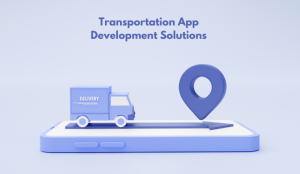How to Convert Your Website into a Mobile App

Convert your website into a mobile app represents an integral step toward expanding digital reach and improving user accessibility. By seamlessly transitioning your online platform into a mobile application, you open up numerous opportunities for engaging with your target audience on the go and tapping into an ever-expanding mobile market.
Transformation requires taking an intentional, strategic approach that encompasses evaluation of your website’s functionalities, design considerations for smaller screens, and careful development efforts to guarantee an outstanding user experience across mobile devices.
Ascertaining whether native or cross-platform development approaches will best fit your project requires carefully considering factors like performance, cost and time-to-market while prioritizing user-centric design principles to optimize usability and engagement.
Security remains of the utmost importance throughout the development process, with stringent measures taken to protect user data and uphold trust between the parties involved. An effective launch on popular app stores combined with robust marketing strategies will put your app into the hands of eager users, forging brand loyalty and driving business expansion.
Over time, user feedback and technological advances will shape and evolve your mobile app, creating an invaluable asset in your digital ecosystem.
11 Steps to How to Convert Your Website into a Mobile App
As you start your journey to convert your website into a mobile app, each step must be carefully executed. In this guide, we shared 11 simple steps that will expedite this transition and facilitate a smooth journey. By carefully following these steps, you will gain the knowledge and guidance to effectively transform your digital presence onto multiple platforms with mobile technology – unlocking its full potential!
Select the Correct Approach:
When choosing between native or cross-platform development approaches, take into account factors like development cost, time-to-market and user experience into consideration when making an informed decision.
Native apps (developed specifically for each platform, iOS and Android) offer optimal performance as they utilize platform features exclusively; however, separate development efforts and maintenance may be required.
In addition, cross-platform frameworks such React Native or Flutter allow users to write code one time and distribute across multiple platforms, reducing time and energy compared to creating native apps that are made for every operating system (iOS as well as Android).
Ultimately, make an informed decision that meets both your project requirements, target audience needs, and long-term goals before making an informed decision!
Assess Your Website:
Conduct a detailed evaluation of your current features, content, and functionality on your website. Pinpoint key elements essential for mobile app creation that users value the most; take note of how these will translate onto smaller screen sizes with touch interactions; evaluate the user experience on mobile devices to identify any areas for enhancement or optimization; prioritise these.
Research Development Tools:
- When choosing development tools and platforms for building mobile app, conduct thorough research.
- Consider factors like ease of use, community support, scalability and compatibility with your existing technology stack when selecting tools that align with project requirements and development expertise.
- Choose tools that suit either native development languages such as Swift or Kotlin or cross-platform frameworks like React Native or Xamarin to facilitate efficient development with seamless integration to websites or services.
Design User Interface (UI):
- Redesign your website’s user interface (UI) for mobile devices by paying special attention to elements such as layout, navigation, typography and visual hierarchy.
- Optimize the UI for touch interactions and smaller screen sizes so users can navigate and interact easily with your app.
- Employ responsive design principles so it adapts itself to various screen resolutions and orientations – striving for an aesthetically pleasing and intuitive design will enhance user experiences on mobile devices.
Create App Functionality:
- Translate your website’s core functionalities into mobile app form, prioritizing features that are most relevant and valuable to users.
- Prioritize functionality that improves usability, engagement, and conversion rates while considering workflow optimization for mobile users utilizing platform-specific features and capabilities.
- Integrate with external services APIs or backend systems where needed in order to provide a seamless user experience across platforms while striving for feature parity between platforms and optimizing mobile experience for user usage.
Optimization: Optimizing Performance:
Mobile app performance plays an essential part in user retention and satisfaction. Make it faster, more responsive, and more efficient of resources to give users a pleasant experience.
Minimize loading times by optimizing asset sizes, using caching mechanisms to reduce network requests, lazy loading techniques such as code splitting or lazy loaders that dynamically load content dynamically can reduce initial load times as well as optimizing asset sizes with caching mechanisms for faster network requests and reduced network requests.
Implement lazy loading techniques such as lazy loaders that load content dynamically improving initial load times as well as instrumentation techniques such as profiling or A/B testing to monitor and optimize app performance metrics to ensure optimal app performance across devices, network conditions and usage scenarios.
Guarantee Security:
Security should always be of the utmost concern during mobile app development, particularly when handling sensitive user data and transactions. Incorporate stringent measures to safeguard user privacy, prevent unwarranted access and guard against potential vulnerabilities—secure data transmission using HTTPS and TLS to protect against eavesdropping and man-in-the-middle attacks.
Implement strong authentication mechanisms, such as biometric and two-factor authentication (2FA), to verify user identities and prevent unauthorized access. As regularly as possible, update and patch your app to address security vulnerabilities and stay ahead of new threats and attack vectors.
Testing and Quality Assurance:
Comprehensive testing and quality assurance testing are vital to ensure the reliability, stability, usability, and accessibility of your mobile app across various devices, platforms, and use scenarios. Create a comprehensive testing strategy that includes usability, functionality and security tests. Use both manual and automated techniques for manual and automated tests in order to discover and address issues early in the development cycle.
Testing your app across a range of devices, screen sizes, and operating systems will ensure compatibility and consistency for users. Use testing tools, frameworks and other services to simplify testing processes and expand the coverage of tests.
Solicit feedback from beta testers and real users in order to identify usability issues, bugs, and areas for improvement; then iterate and refine according to user feedback to deliver a high-quality product that exceeds user expectations.
App Store Submission:
Before submitting your app to the Apple App Store or Google Play Store, ensure it complies with their respective policies, guidelines, and requirements.
Add appealing app listings by including high-quality graphics, screenshots, videos, and descriptive text that highlight your app’s features and benefits. Include accurate metadata such as app name, description, keywords and category to increase discoverability and search ranking. Prepare promotional materials and assets to support your app launch and marketing initiatives.
Take care when following the app store submission process, including creating developer accounts, filling in-app information forms, submitting app binaries, complying with review guidelines, monitoring reviews closely, responding quickly to any feedback or issues raised by reviewers, celebrating when approved and getting ready to launch officially on store platforms.
Launch and Promote:
For optimal success when releasing an app on the Apple App Store and Google Play Store, consider employing an effective marketing and promotion strategy to increase visibility, downloads, and user engagement.
Utilize a variety of methods and channels of marketing such as email marketing, social media influencer outreach, optimizing your store’s app (ASO), and paid advertisements to reach your targeted users and promote the app. Emphasize the unique selling points, key features and benefits of your app to attract potential users and retain existing ones.
Promote user engagement through ongoing communication, updates and promotions while monitoring key performance indicators (KPIs) such as downloads, installs, user ratings/reviews/revenue to evaluate its success as an app launch and maximize marketing efforts accordingly.
Iterate and Update:
Mobile application development is an ongoing process that requires constant adaptation according to user feedback, market trends, and technological advances. Utilize feedback from users to determine areas of improvement and prioritize the addition of features.
Release regular updates and new versions of your app to address user feedback, resolve bugs, introduce new features and remain competitive in the marketplace.
Keep up-to-date with new developments in technology, trends in industry and competitor strategies to ensure you are able to anticipate developments and potential opportunities. By adopting a culture of continuous innovation and iteration for your app’s development, you can ensure it remains engaging for users over time.
How Much Does It Cost to Convert Your Website into a Mobile App?
Beginning the journey to convert your website into a mobile app requires not only technical considerations but also financial planning. Understanding the costs involved with this endeavour is vital for effective budgeting and resource allocation; factors like development approach (native vs cross-platform), the complexity of features, design requirements, ongoing maintenance cost, etc., all play a role.
| Cost Component | Description | Estimated Range |
|---|---|---|
| Development | Includes coding, design, and testing efforts for app development. | $5,000 – $100,000+ |
| App Store Fees | One-time registration fee for publishing on app stores (e.g., Apple App Store, Google Play Store) and ongoing charges. | $25 – $100+ |
| Maintenance & Updates | Regular updates, bug fixes, and feature enhancements to keep the app current and functional. | $1,000 – $10,000+/yr |
| Marketing & Promotion | Costs associated with promoting the app to attract users, such as advertising, influencer marketing, and PR. | $1,000 – $50,000+ |
| Hosting & Backend Services | Infrastructure costs for hosting app data and backend services, including server expenses and database management. | $50 – $500+/month |
| Miscellaneous | Additional expenses like licensing fees, third-party tool subscriptions, and legal compliance. | $500 – $5,000+ |
Conclusion:
Deciding to convert your website into a mobile app represents a strategic move toward expanding your digital presence and improving user engagement. Leveraging mobile device convenience and accessibility, you can reach more potential clients while offering seamless user experiences tailored to mobile environments.
Careful planning and consideration are integral parts of this process, from choosing the most effective development approach to minimizing costs and assuring security; every step is important in the overall success of your mobile app venture.
While costs of development and ongoing maintenance can vary significantly, an investment often justifies itself with increased brand recognition, customer engagement and revenue generation.
Converting your website to an app for mobile requires a mix of technological expertise, innovative design and a strategic approach. By welcoming this transformation and keeping up-to-date on industry trends and user preferences, your app can position itself for long-term success in an increasingly competitive mobile ecosystem.






